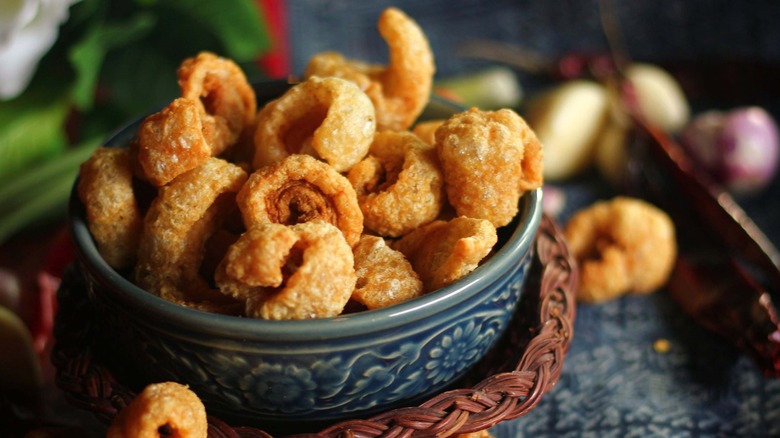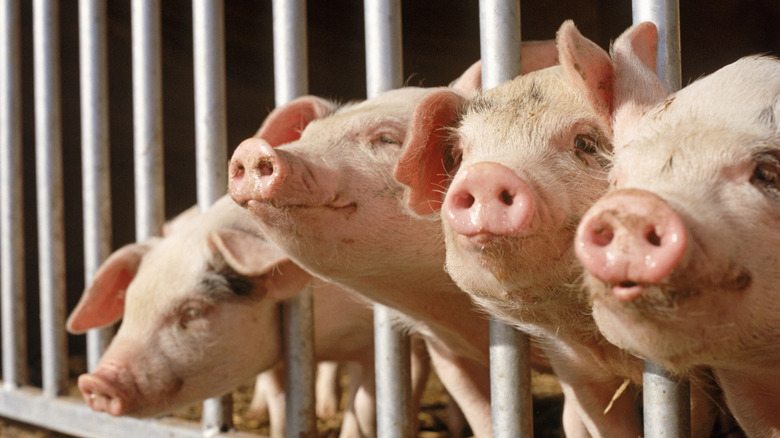Chicharrones Vs Pork Rinds: What Is The Difference?
Crunchy, light, and airy, pork rinds and chicharrones are found in convenience stores all over the U.S. and enjoyed by many people. From first glance, the protein-packed snack appears to be the same, but they are quite different. True to the name, pork rinds are made from the skin of pigs, which is highly processed before being cooked in fat. Chicharrones are also fried, but they can be made from any type of meat, not just pork. Both products have a long history. The pork rind, also known as crackling, was said to be eaten by 19th century soldiers on long journeys and by shepherds caring for their flocks. Meanwhile, in some legends, the origin of chicharrones can be traced back to 18th century Spain and a curious hog farmer. Wherever they precisely came from, chicharrones eventually became a much loved snack throughout Spain and its colonies.
The main differences between the two come down to the ingredients used, the fat content, and the overall taste of each product. If the chicharrones are made with beef or mutton, then the fat content will be considerably lower than that of pork rinds. The taste of the final product will change if different types of meat are used. Generally, pork rinds taste a lot like bacon with the crispiness of potato chips. A pork chicharrone will have a similar flavor. Both pork rinds and chicharrones have crispy textures and are light and airy. Although the similarities stop there if you're eating non-pork chicharrones, most sold in the U.S. are of the pork variety.
How are pork rinds and chicharrones made?
Simmering begins the process of making pork rinds. Placing the pig skin in water helps to remove some of the natural fat and shrinks the skin. Afterward, the skin is cut into bite-sized pieces (often called pellets) and chilled. When the pellets are thoroughly cold, the excess fat is removed and the pieces are placed in an oven for eight to 10 hours to partially dehydrate. The final step is deep frying around 400 degrees Fahrenheit. The pork rinds can be seasoned with salt, spices, sauces, or other flavors. Chicharrones are made in a similar manner.
But are these snacks considered healthy? It all depends on your perspective. Those who are following high-protein diets (such as keto and paleo) might consider pork rinds to be a nutritious low-carb snack. Yet pork rinds are high in cholesterol, saturated fat, and sodium. The highly processed food can raise your level of "bad" LDL cholesterol and lead to high blood pressure, heart disease, and even stroke. A half-ounce of pork rinds (roughly six pieces) contains 80 calories, 9 grams of protein, 5 grams of fat, 20 milligrams of cholesterol, and 270 milligrams of sodium (that about 11% of the standard daily allotment for sodium for an average adult). With that in mind, it makes sense to limit how much you eat, whether you're chowing down on pork rinds or chicharrones.

